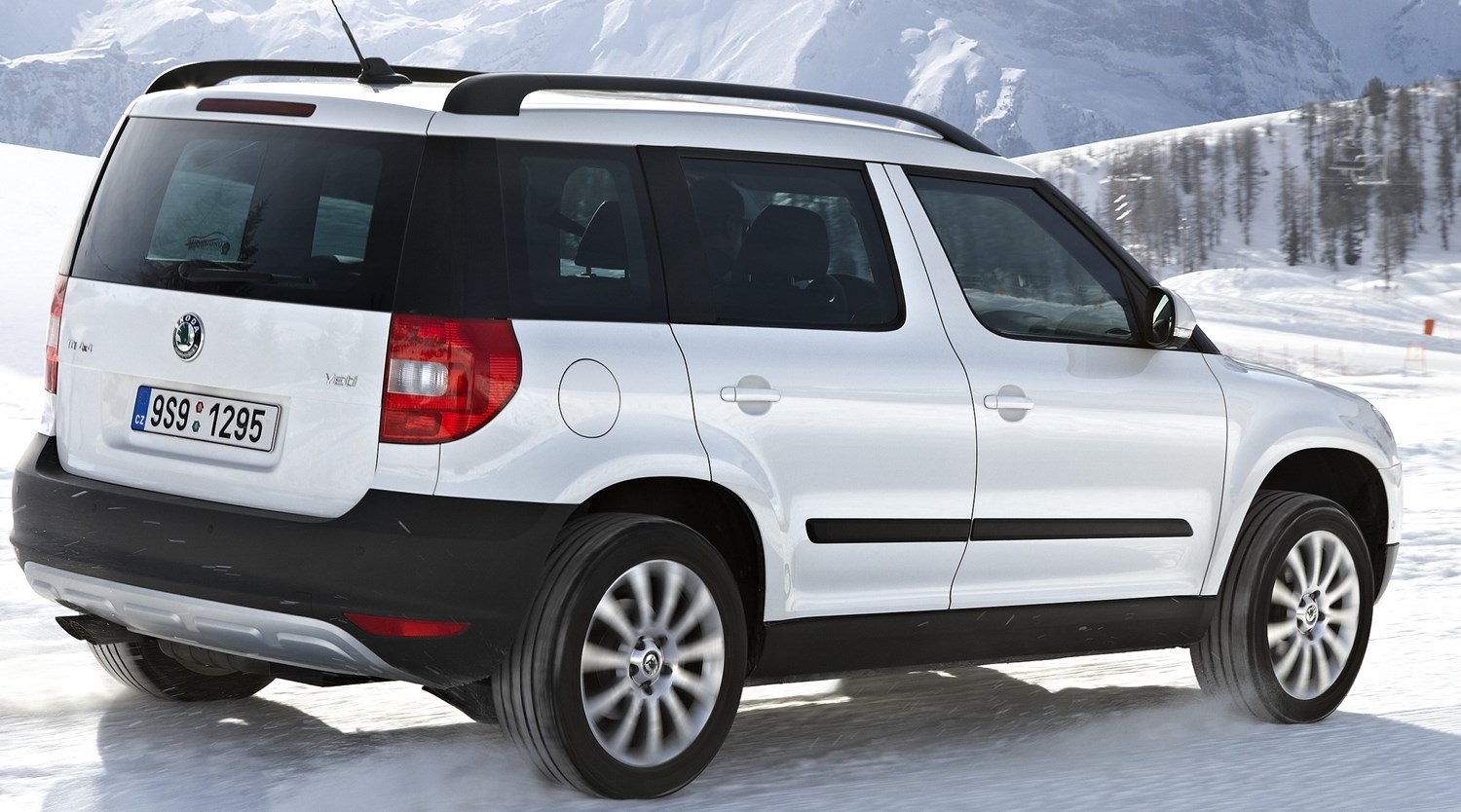Space and practicality
As far as interior space is concerned, the Skoda Yeti won’t disappoint. Thanks to its boxy shape and tall roof line, there’s plenty of leg- and headroom for four adult passengers in both the front and the back.
While there is a small middle seat, adults will likely find it uncomfortable on anything other than a short journey. As far as children are concerned, however, the Yeti should prove to be more than up for the task of ferrying them around.
Boot space stands at 416 litres, which isn’t exactly class leading, but thanks to the Yeti’s square shape and a lack of a steep boot lid loading heavy items into the rear shouldn’t prove to be too much of a problem.
Should you require additional room, the rear seats can be folded flat to reveal 1,580 litres of storage space. The Yeti’s back seats can also be taken out completely to free up 1,760 litres of capacity.
Engines
The Skoda Yeti is available with a selection of two petrol engines as well as two diesels. Skoda also offers the Yeti in front-wheel-drive and four-wheel-drive configurations. All Yetis are offered with a manual transmission as standard, although a dual-clutch automatic is also available with certain engines.
The entry-level petrol unit is a 1.2-litre, four-cylinder engine that develops a respectable 109bhp. This engine can be paired with either a six-speed manual transmission or a seven-speed dual-clutch auto. Regardless of the transmission, it manages a combined fuel economy figure of 51.4mpg with CO2 emissions of 128g/km. This engine is only available with front-wheel-drive cars.
Customers can also opt for a larger 1.4-litre petrol. This engine produces 148bhp, and can only be specified with a Yeti 4x4. With the standard-fit six-speed manual transmission, Skoda claims this engine can achieve an economy figure of 44.8mpg on the combined cycle, while CO2 emissions stand at 147g/km.
As far as diesel engines are concerned, Skoda offers a 2.0-litre TDI with either 109bhp or 148bhp.
The less-powerful engine is available on both two-wheel- and four-wheel-drive Yetis. It can achieve fuel economy and emissions figures of 64.2mpg and 115g/km in two-wheel-drive guise with a manual transmission, which rise to 53.3mpg and 137g/km on 4x4 automatic models.
The 148bhp diesel engine is only available on four-wheel-drive Yetis. With a manual transmission, Skoda claims this engine can manage a combined fuel consumption figure as high as 55.4mpg with CO2 emissions as low as 134g/km. With the DSG gearbox, these figures are affected slightly, with fuel economy falling to 51.4mpg while CO2 emissions rise to 144g/km.
Running costs
Regardless of which engine you choose, the Skoda Yeti won’t be too expensive to keep on the road.
Buyers who are planning on covering a large number of miles will likely find the two-wheel-drive, 109bhp diesel the most attractive option, thanks to its 64.2mpg economy and CO2 emissions of 115g/km.
While the diesel engines tend to be more economical than the petrols, they are loud and rather unrefined. The large majority of Yeti buyers will likely opt for the petrol engine options.
As far as VED is concerned, the cheapest Skoda Yeti to tax will be the 2.0-litre, 109bhp diesel with two-wheel drive, as well as the 1.2-litre petrol. With respective CO2 emissions of 115g/km and 128g/km, these variants will both cost buyers £160 for the first year of ownership and £130 each subsequent year in road tax.




